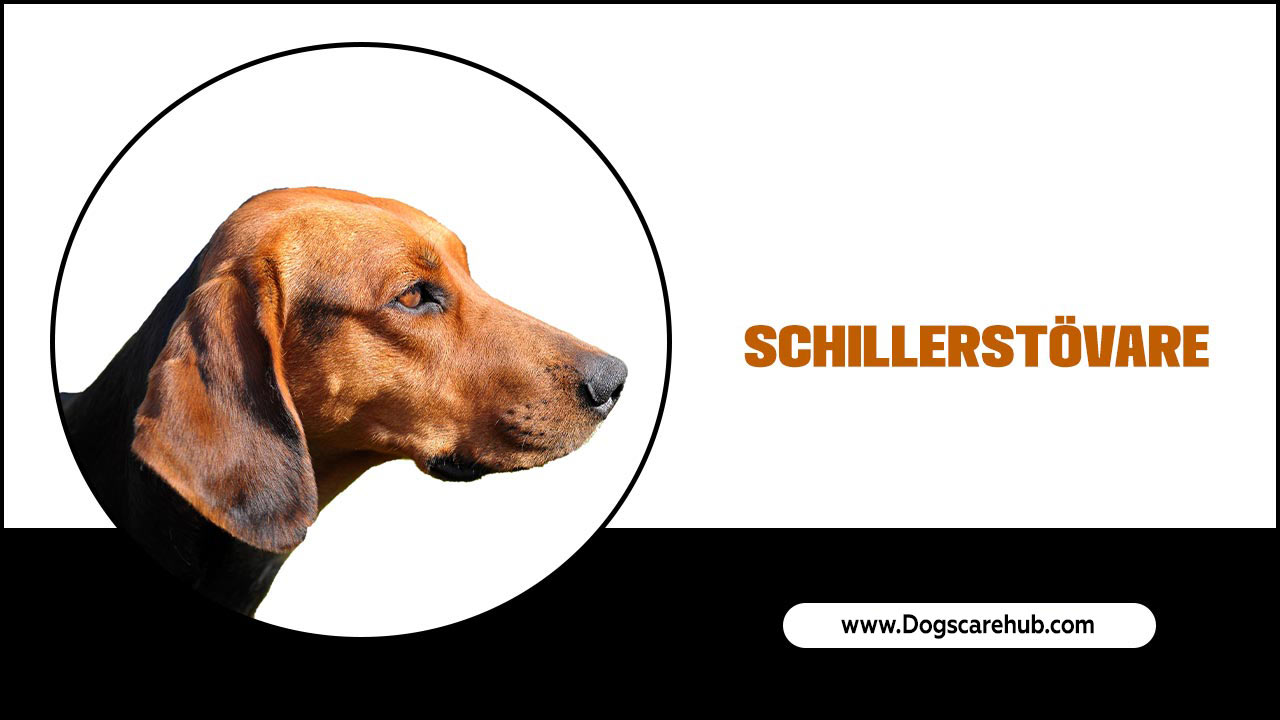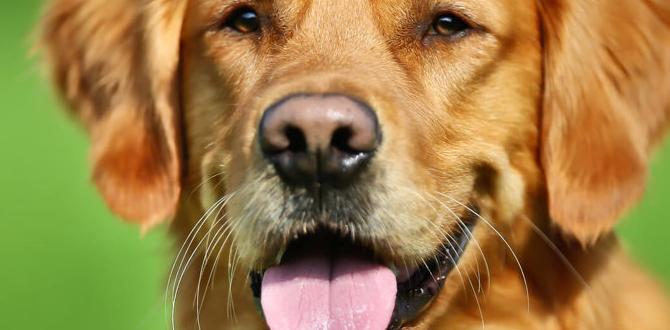Separation anxiety in dogs training involves creating a safe environment, gradual desensitization to departures, and positive reinforcement techniques to build your dog’s confidence when left alone. Effective training focuses on managing triggers and helping your dog associate alone time with calm, positive experiences.
Leaving our furry friends behind can be tough, and it’s even tougher when they seem truly distressed. You might notice crying, barking, destructive behavior, or accidents when you step out the door. This is often a sign of separation anxiety in dogs, a surprisingly common issue that can leave both pets and their owners feeling stressed. But don’t worry! Many times, with patient and consistent training, you can help your dog feel more secure and calm when they’re on their own. This guide will walk you through simple, proven steps to manage and overcome this challenge, transforming those anxious moments into peaceful ones.
Understanding Separation Anxiety in Dogs
Separation anxiety is more than just a dog missing its owner; it’s a genuine panic response. When a dog experiences separation anxiety, they may believe they are in real danger when left alone. This anxiety can stem from various factors, including changes in routine, a previous owner’s abandonment, or even being a rescue dog. Signs can range from mild unease to full-blown panic attacks. Recognizing these signs is the first step towards helping your canine companion.
Common Signs of Separation Anxiety
It’s important to distinguish between normal dog behavior and signs of distress. Here are common indicators that your dog might be suffering from separation anxiety:
- Excessive Vocalization: Persistent barking, howling, or whining, especially when you first leave or when neighbors complain.
- Destructive Behavior: Chewing furniture, scratching doors, or digging at windowsills, often focused on exit points.
- House Soiling: Urinating or defecating inside, even if the dog is reliably house-trained. This is often an expression of stress, not a lack of training.
- Pacing: Moving back and forth in a repetitive pattern, particularly near doors or windows.
- Drooling and Panting: Excessive salivation or heavy panting, even when not hot or recently exercised.
- Escape Attempts: Trying to break out of crates, rooms, or even the house, which can lead to self-injury.
- Depression or Lethargy: Some dogs may become withdrawn or appear sad when their owner is preparing to leave.
It’s crucial to rule out other potential causes for these behaviors. For instance, a medical condition might cause house soiling, or boredom could lead to destructive chewing. A veterinary check-up can help ensure there are no underlying health issues.
Proven Training Solutions for Separation Anxiety
The core of treating separation anxiety lies in helping your dog build confidence and learn that being alone is not frightening. This is achieved through a combination of desensitization, counter-conditioning, and management strategies. Remember, consistency and patience are your best friends throughout this process.
1. Desensitization to Departure Cues
Dogs are smart and quickly learn the routine that precedes your departure. Picking up your keys, putting on your jacket, or grabbing your bag can all trigger anxiety. The goal here is to make these cues less predictive of your absence.
How to do it:
- Start by performing your departure routines without actually leaving. Pick up your keys and put them down. Put on your coat and then take it off.
- Do this multiple times a day, at random intervals. The aim is for your dog to stop associating these actions with you leaving.
- Gradually increase the intensity. For example, jingle your keys, then put them in your pocket. Put your coat on, walk around, and then take it off.
- If your dog shows signs of anxiety, you’ve gone too fast. Reduce the intensity of the cue until your dog is no longer reacting.
2. Gradual Exposure to Alone Time
This is perhaps the most critical step. You’ll gradually increase the amount of time your dog spends alone, starting with very short durations.
How to do it:
- Start small: Begin by leaving your dog alone for incredibly short periods – just a few seconds. Step out the door and immediately come back in.
- Ignore greetings: When you return, avoid overly enthusiastic greetings. Keep them calm and casual. Wait a few minutes until your dog has settled down before giving them attention. This helps prevent reinforcing their anxiety around your comings and goings.
- Increase duration slowly: Gradually increase the time you are gone. From seconds, move to a minute, then two minutes, and so on. The key is to progress at your dog’s pace, ensuring they remain calm throughout.
- Monitor reactions: Use a pet camera or have a neighbor check in to observe your dog’s behavior. If they show any signs of stress (pacing, barking, etc.) during your absence, you are pushing too fast. Go back to a shorter duration where they were comfortable.
- Vary the times: Don’t always increase the duration. Mix in shorter absences as well. This prevents your dog from anticipating a longer absence and becoming anxious beforehand.
3. Counter-Conditioning: Creating Positive Associations
The goal here is to change your dog’s emotional response to being alone. You want them to associate alone time with good things.
How to do it:
- Special “alone time” treats: Reserve a high-value treat—like a stuffed Kong, a puzzle feeder filled with wet food and peanut butter, or a long-lasting chew—exclusively for when you leave.
- Make it engaging: Give these special treats only when you are about to leave or are gone. This creates a positive association. Ensure the treat is safe for your dog to enjoy unsupervised.
- Distribute before leaving: For longer absences, give the treat when you are at the door or just as you are leaving. This helps distract them and provides a positive focus.
- Remove the special treat upon return: When you come back, calmly take away the treat. This reinforces that the high-value item is directly linked to your departure.
4. Creating a Safe, Comfortable Space
Your dog needs a den-like space where they feel secure. This could be a crate, a specific room, or a comfortable bed in a quiet area.
How to do it:
- Introduction: Introduce the space positively. Make it comfortable with soft bedding and familiar toys.
- Never use as punishment: The space should always be associated with safety and positive experiences.
- Make it inviting: Toss treats into the space and let your dog explore it on their own terms.
- Feed meals there: Start feeding your dog their meals inside their designated safe space to build positive associations.
- Crate training (if applicable): If using a crate, ensure it’s the right size and the process is gradual and positive, never forcing your dog inside. For more on this, consult resources from the Humane Society.
5. Managing Anxiety-Inducing Environments
Sometimes, certain environmental factors can worsen separation anxiety. Addressing these can significantly help.
How to do it:
- Reduce visual triggers: If your dog gets anxious watching people or other animals outside, block their view by closing curtains or using frosted window film.
- Mask sounds: White noise machines, calming music specifically designed for dogs (like those from Music for Dogs), or leaving the TV on can help drown out external noises that might trigger barking or anxiety.
- Provide adequate exercise and mental stimulation: A tired dog is a well-behaved dog. Ensure your dog gets enough physical activity and mental engagement throughout the day.
6. Lifestyle Adjustments
Certain changes in your daily routine can make a big difference in your dog’s anxiety levels.
How to do it:
- Calm departures and arrivals: As mentioned, make your departures and arrivals low-key events. Avoid lengthy, emotional goodbyes or overly excited hellos. Wait until your dog has calmed down before interacting.
- Independent play: Encourage your dog to play with toys on their own, even when you are home. This helps them develop a sense of self-sufficiency.
- Consistent routine: Maintain a predictable schedule for feeding, potty breaks, exercise, and playtime. This predictability can be very reassuring for anxious dogs.
When to Seek Professional Help
While these training methods are effective, some dogs have severe separation anxiety that requires professional intervention. If you’re not seeing progress, or if your dog’s anxiety is profound and includes self-harm or extreme distress, it’s time to consult a professional.
Who to contact:
- Veterinarian: Your vet is the first point of contact. They can perform a thorough health check to rule out any physical causes and can discuss potential medical interventions with you. In some severe cases, veterinarians might prescribe anti-anxiety medication to complement training. You can find more information about canine anxiety on the American Veterinary Medical Association (AVMA) website.
- Certified Applied Animal Behaviorist (CAAB) or Veterinary Behaviorist (DACVB): These professionals have specialized training in animal behavior. They can diagnose the specific type of anxiety and develop a comprehensive, tailored treatment plan.
- Certified Professional Dog Trainer (CPDT-KA/KSA): Look for trainers with specific experience and certifications in handling separation anxiety. They can guide you through the training process with hands-on support.
Tools and Resources for Separation Anxiety Training
A variety of tools can support your training efforts. Always ensure any tool is used safely and humanely.
| Tool | Description | How It Helps |
|---|---|---|
| Puzzle Feeders/Stuffed Kongs | Toys that dispense treats or food when manipulated. | Provide mental stimulation and a positive distraction during absences. Helps build positive association with alone time. |
| Calming Music/White Noise Machines | Audio devices that play soothing sounds. | Masks startling external noises that might trigger anxiety. Creates a calming auditory environment. |
| Pet Cameras | Devices that allow remote monitoring of your pet. | Crucial for observing your dog’s behavior when you’re not there and assessing progress. Helps you identify when to speed up or slow down training. |
| Calming Supplements/Pheromones | Products like Adaptil diffusers or chews that contain calming ingredients. | Can help reduce general anxiety levels. Always consult your vet before starting any supplement. |
| High-Value Treats | Specially selected, extra-tasty treats. | Used for counter-conditioning and rewarding calm behavior during training. |
Setting Realistic Expectations
It’s important to understand that treating separation anxiety is a marathon, not a sprint. It requires patience, consistency, and a deep understanding of your dog’s needs. Some dogs may show marked improvement within weeks, while others might take months. Celebrate small victories and try not to get discouraged by setbacks. Your commitment to your dog’s well-being is the most powerful tool you have.
Factors influencing progress:
- Severity of anxiety: Mild cases often resolve faster than severe, long-standing anxiety.
- Your dog’s age and breed: Younger dogs may adapt more quickly, but some breeds might be predisposed to anxiety.
- Consistency of training: Daily, consistent application of training techniques yields the best results.
- External factors: Changes in household routine, new pets, or moves can sometimes set back progress.
FAQ: Your Questions Answered
Q1: How do I know if my dog has separation anxiety or is just bored?
A1: Separation anxiety is typically triggered by your departure and involves panic-based behaviors like excessive vocalization, destructive chewing focused on exits, house soiling, or obvious distress during departure routines. Boredom might lead to more general destructiveness or attention-seeking behavior, but it’s usually not accompanied by the intense panic associated with genuine separation anxiety.
Q2: Can I leave my dog alone for short periods while training?
A2: Yes, short, positive absences are the cornerstone of separation anxiety training. Start with just a few seconds and gradually increase the time. If your dog shows any signs of distress, reduce the duration. Using a pet camera is highly recommended to monitor their comfort level.
Q3: What should I do if my dog is barking or howling the entire time I’m gone?
A3: If your dog is barking incessantly, it indicates a high level of distress, and you likely need to go back to shorter, non-distressing absences. Consider using a sound machine or calming music to help mask external triggers for barking. If the howling persists and indicates panic, it’s a sign you’re over your dog’s current threshold for being alone, and you need to reduce the duration of your absences significantly.
Q4: Are there natural remedies for separation anxiety?
A4: Some owners find success with natural remedies such as calming treats, pheromone diffusers (like Adaptil), or calming music for dogs. However, their effectiveness varies greatly, and they are generally most helpful when used in conjunction with a comprehensive desensitization and counter-conditioning training program. Always consult your veterinarian before using any supplements or remedies.
Q5: Will medication help my dog’s separation anxiety?
A5: In moderate to severe cases, medication prescribed by a veterinarian can be a very effective tool to manage the intense anxiety associated with separation. Medications can help calm your dog enough so that they are receptive to training. It’s important to remember that medication is usually most effective when combined with behavioral modification and training techniques.
Q6: How long does separation anxiety training typically take?
A6: The timeline for separation anxiety training varies significantly from dog to dog. Some dogs may show improvement within a few weeks of consistent training, while for others, it can take several months. Patience, consistency, and adjusting the training plan based on your dog’s progress are key to successful outcomes.
Wrapping Up: A Gradual Path to Independence
Separation anxiety in dogs is a challenging journey, but it’s one you can navigate successfully with the right knowledge and approach. By understanding the root causes of your dog’s distress and implementing systematic training strategies—like desensitization to departure cues, gradual exposure to alone time, and positive counter-conditioning—you can help your dog develop greater independence and confidence. Remember to create a safe haven for your pup, manage their environment, and consider lifestyle adjustments that promote calmness. While some cases may require professional help, the consistent application of these proven methods will pave the way for a more peaceful and secure life for both you and your beloved canine companion. Every step forward, no matter how small, is progress towards a happier, calmer dog.
Meet Elyse Colburn, the devoted canine companion and storyteller behind the enchanting world of “Tales, Tails, and Adventures Unleashed.” A passionate dog enthusiast with a heart full of paw prints, Elyse Colburn shares heartwarming tales and insightful adventures, celebrating the joy, loyalty, and endless antics that make every dog a true hero. Join Elyse Colburn on this tail-wagging journey, where every post is a love letter to our four-legged friends.






